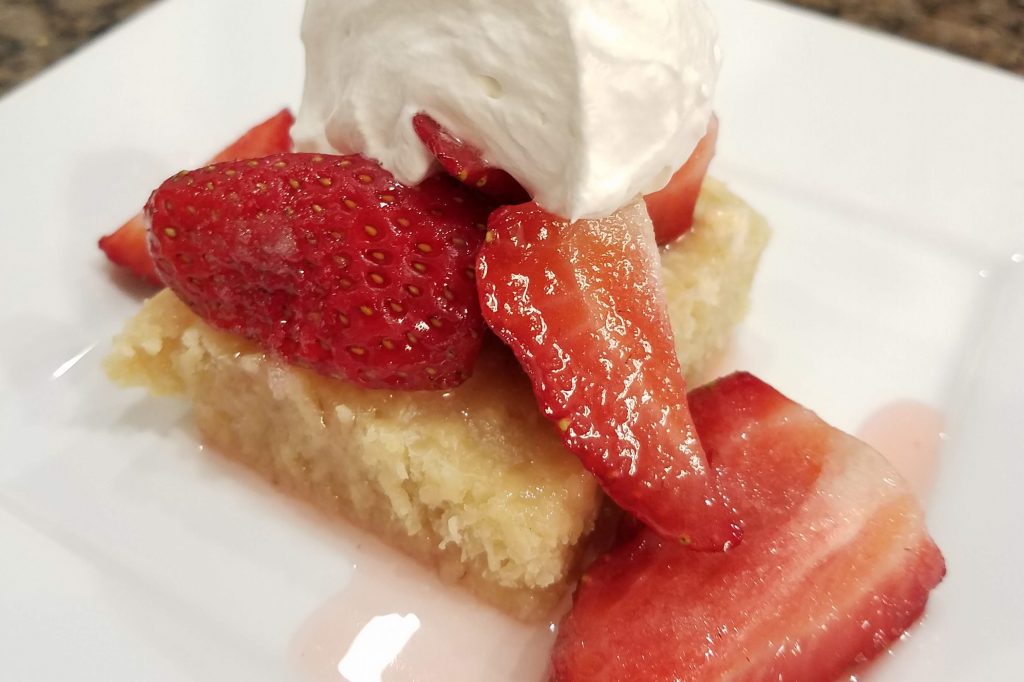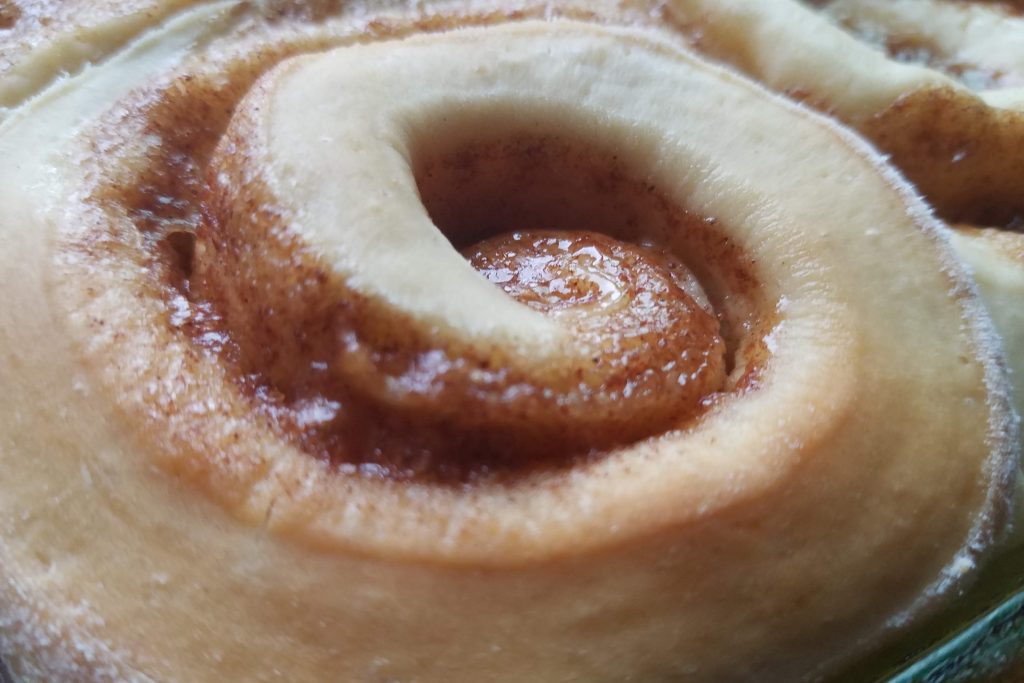My Adventure with a Sourdough Starter
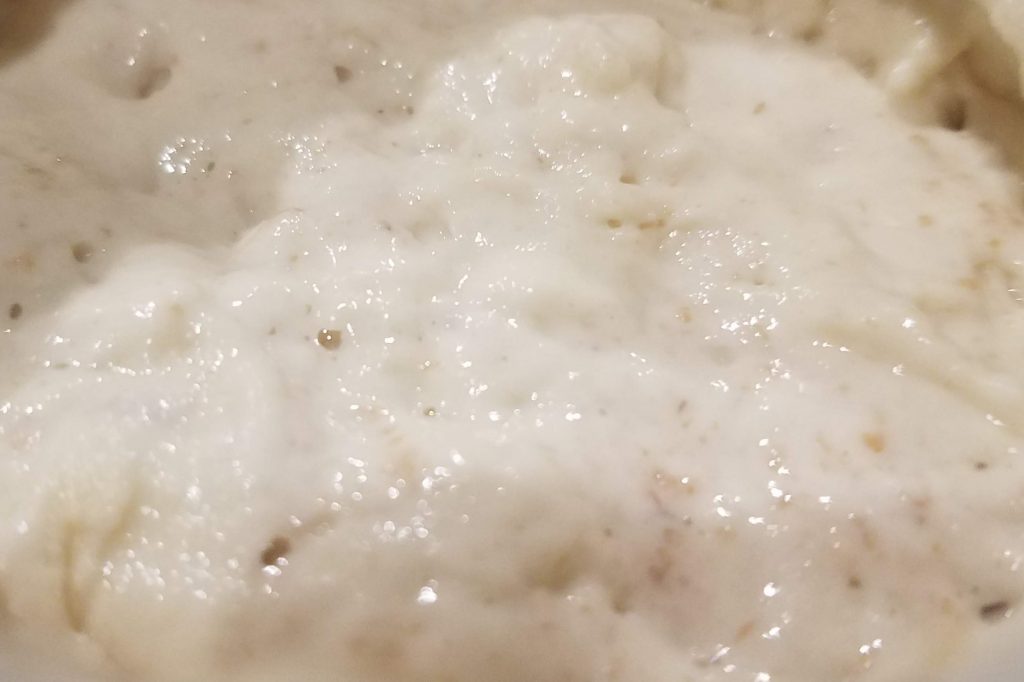
Sourdough starters rose in popularity recently due to the coronavirus outbreak and subsequent panic-shopping that resulted in strange compulsions and stranger buying trends. While not normally prone to fads, the sourdough starter was useful to embrace at the time and is now indispensable for my culinary day-to-day.
Full disclosure: I am not a professional cook. Merely an active enthusiast who has gleamed enough knowledge over time to be semi-confident and partially-competent in the ways of cooking sorcery and tom-foodery.
Over the past few years, I’ve cultivated a not-so-healthy relationship with yeast, necessitated by a love for dough and the various food products resulting from the union of flour, yeast, and a liquid. Hearing that there were yeast shortages, I panicked. I had built my own safety net of recipes and knew that with yeast and a bag of flour, I could huddle down and survive any bread, pasta, or baked good shortage that should come my way. A shortage of yeast, however, was unanticipated.
I joined in on the trend. If I could avoid using my remaining stash of yeast where I could, well, then I would do what I could. It was highly intimidating but….stunningly easy.
Simple Starter Rules
As long as you follow some basic guidelines and have flour and water, you can make your own yeast. There are just a few rules:
- The starter is made of equal parts flour and water
- What you take out, you should try to return (noting that it expands)
- Don’t let it get too hot or cold
- If it’s on the counter, feed it every day or two
- If it’s in the refrigerator, feed it once a week
- Give it breathing room in the container; it grows and then shrinks
My Sourdough Starter Process
Researching the Process
I did light research, relying on a combination of ideas to make sure I understood the process. (This is a general best practice; always recommend reading several recipes before starting something new). The Clever Carrot and King Arthur Flour were two resources I leaned on. King Arthur Flour an absolutely indispensable and fabulous resource for all of your baking and flour needs, by the way.
Containing the Project
Jars, in the style or size they mentioned, were not available on-hand, in my home. And well, since this undertaking was occurring amidst a pandemic, I was not inclined to purchase proper equipment for myriad reasons. Thus, my starter came to life in a sanitized, old, and embarrassingly, medium, salsa jar.
Sterilization is a great way to make glass bottles ready for reuse. Since I started with a food-based jar, I cleaned the jar several times and sterilized it in with a boiling method, to ensure all unrelated food particles were removed. To sterilize a glass jar, clean it, and boil the open jar in a vat of water. I used a dutch oven. As long as you use heatproof equipment and common sense, it’s not a stringent process. For a more detailed look, check out this article about prepping glass jars for reuse on Nature Code.
Capturing Yeast
I then combined equal parts water and flour in the jar and loosely covered ti with a paper towel for the first day, then placed the lid back on the jar overnight. The second day, the jar sat. On the third day, I saw bubbles and began to get the aromatic sour scent that indicates yeast activity. The scent lightly sour and some describe it as fruity. Light is good – if it drifts towards something horribly pungent, you may need to start over.
Since I had bubbles and the smell, I began to discard half and replace it with equal parts flour and water, once in the morning and once in the evening. After 5 days, it was bubbly, lively, and ready-to-use.
Staying Alive
The process works because yeast is naturally around you. The flour and water create an ideal environment for the yeast to live – essentially, the process is that of capturing wild yeast. There are studies going on and quite a bit of scientific exploration on what spurs this process.
Having successfully captured and cultivated the wild yeast, one must then keep it alive. As long as you do not expose the jar to temperature extremes and continue the process of removal and replenishment, you will feed the beast.
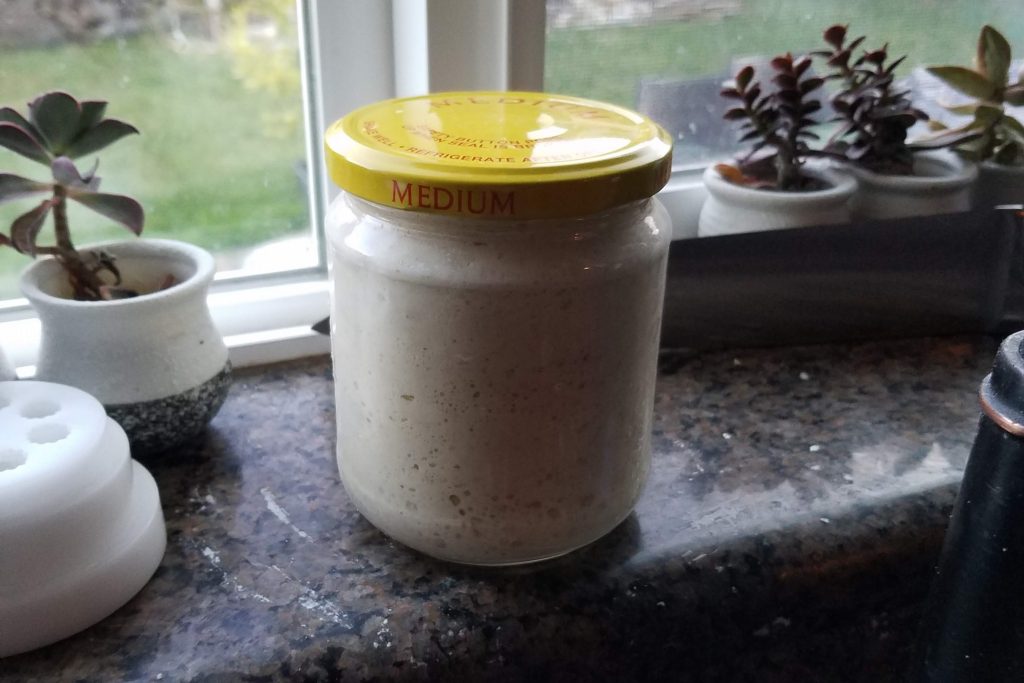
Or um, over feed it. This would be the “expands and contracts” point mentioned in the “Simple Starter Rules.” The key is to measure what you take out or simply know your jar’s carrying capacity. A bigger jar will give you more flexibility in what you can make and decreases chances for messes.
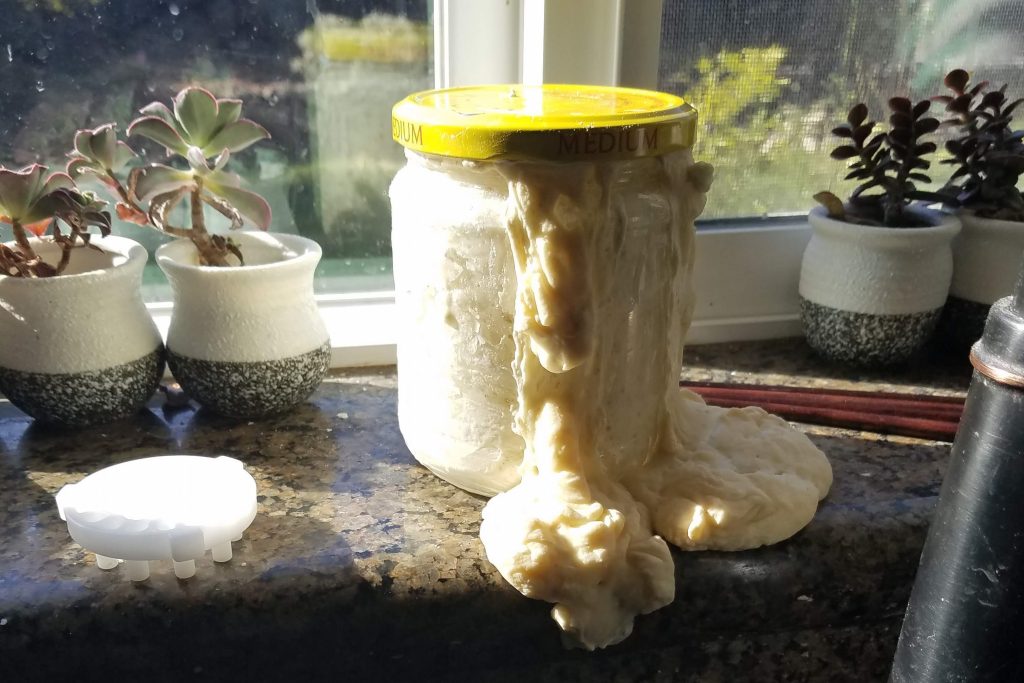
Keeping a schedule:
There may be times when you forget to feed the culture on time. If you wait too long, the yeast will die; however, it can recover if just off by a day or so. Mine has several times. The general rule of thumb is every other day, at room temperature, and every sixth day, if in the fridge. Each culture is different. Generally, within 24 hours (room temperature) of a feeding, you’ll see noticeable reactivity if the yeast is alive – bubbles and resulting expansion.
Refrigeration:
Refrigeration extends the amount of time between feedings by slowing down the reactions in the starter. Yeast is sensitive to temperature. The temperature in the refrigerator will cause the yeast to slow down. This is helpful in the starter and with fermentation processes in dough. The yeast act more slowly, and their consumption and reactions change, subtly altering flavor
Flour:
You can incorporate different kinds of flour into your starter to modify the composition or experiment. All-purpose flour, bread flour, wheat flours, rye flour, spelt flour, or semolina can be used to feed the starter.
A Note on Water:
Supposedly the chlorine in tap water can kill it, but that may be fixed by letting the water stand and the chlorine evaporate. I’m not entirely certain if it’s a necessary step once the yeast is active – water directly from the tap has not hindered my culture yet.
Overall, the yeast is fairly hardy. I have yet to kill it despite several near calls and one temporary relocation to allow me to completely clean the jar.
What to do With the Discard
Depending on the storage method, there is a portion of the sourdough starter that is removed on a weekly or near daily basis. While, often described as a discard, this does not need to be thrown away, and does not need to be used to make sourdough bread exclusively. It can be used to make breads, as a replacement for yeast, or as a flavor enhancer in flour-based recipes.
Bread
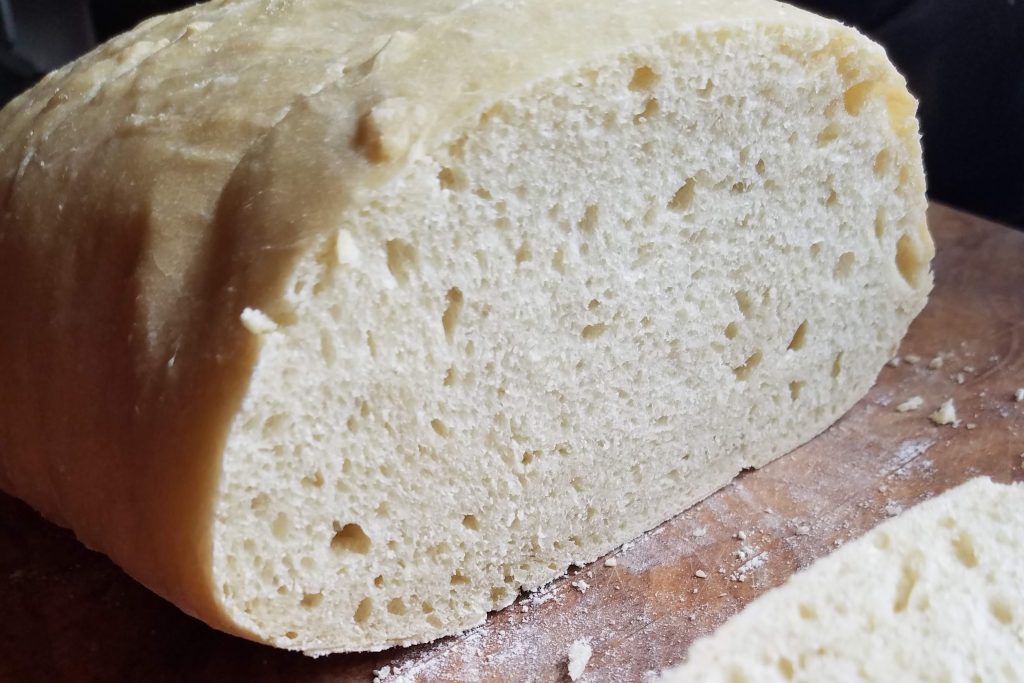
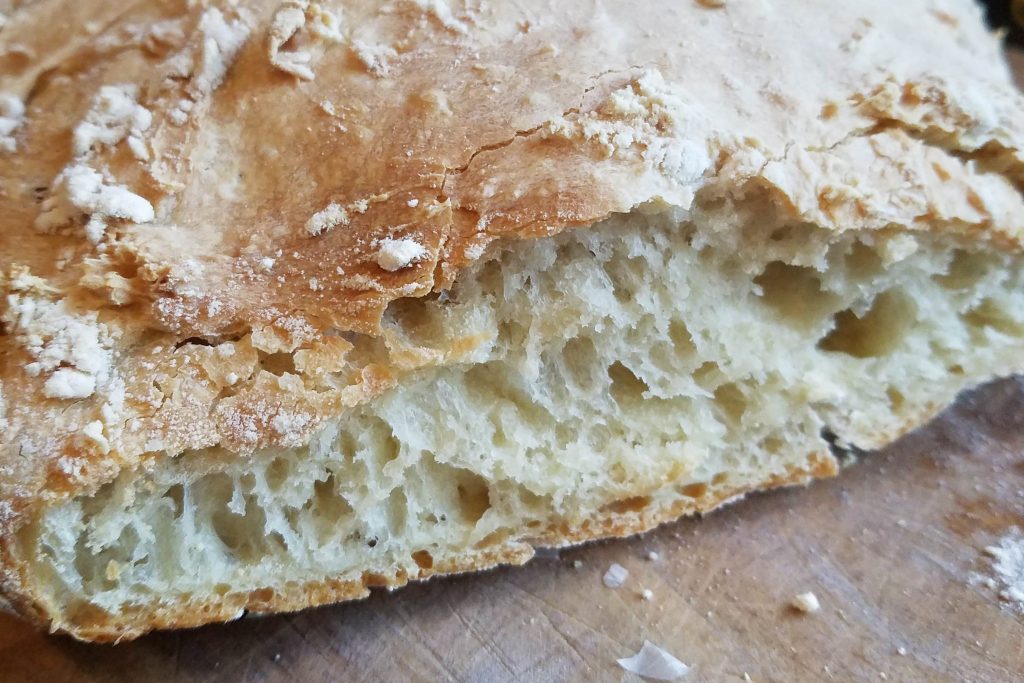
By name, the sourdough starter can be used to make a sourdough bread. Sourdough breads are high-water breads meant to have extensive proofing time, which allows the fermentation to produce the flavor for which it is named and to which it is associated. However, the key aspect of the bread is the use of wild yeast. Using less water or a shorter rising/proofing period, you can make dynamic breads that don’t have to be sour. Then you must ask yourself what it means to be sourdough – in spirit and in substance.
Replace Yeast in a Recipe

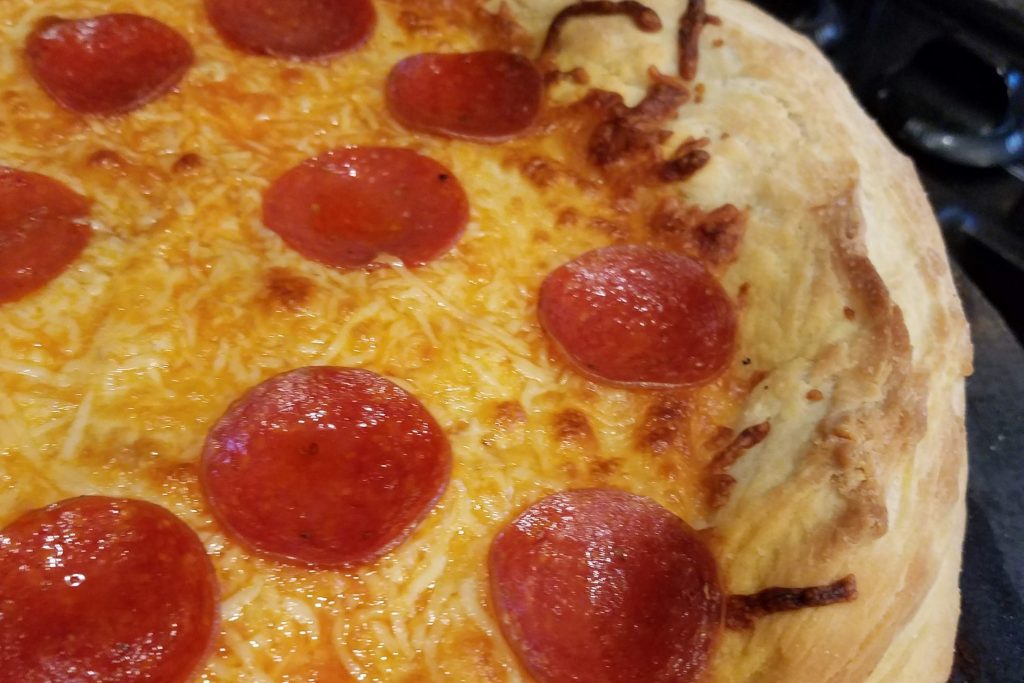
Since the discard is a yeast cultivation, you can use it to replace yeast in normal recipes. I have found success with recipes with longer rise times. There are two generic rules of thumb to keep in mind to start experiments with.
- Ratio rule: Use flour, water, and starter in a 3:2:1 or 4:2:1 ratio to make the initial dough
- Double trouble: Use about twice the amount of starter as a recipe calls for dry yeast, and allow for twice the rise time
So far, I’ve used this yeast successfully and as the exclusive leavening agent in a shortbread, pizza crusts of varying weights, rolls, and hamburger buns.
Flavor Enhancer
Flavor enhancer – The starter can replace flour and water in nearly any recipe that calls for flour and water, irrespective of your use of other leavening agents. Just take out the amount of flour and water that you added into bowl with the starter out of the recipe. It may make, but won’t break the recipe, adding a flavor depth that may or may not be noticeable.
Final Thoughts on the Sourdough Starter
Honestly, the flavor and texture that comes from recipes based on wild yeast rather than commercial yeast have exceeded my expectations. I don’t think I’ll go back to dry yeast for breads in general.
I now know why people get so attached to their sourdough starters, it’s kind of magical.
The sourdough starter is a worthy endeavor that makes for a fun project (actually recommended as science project for kids). You can use whatever you have at home and in the worst case scenario, you might waste a few hours of your life or 2 cups of flour.
